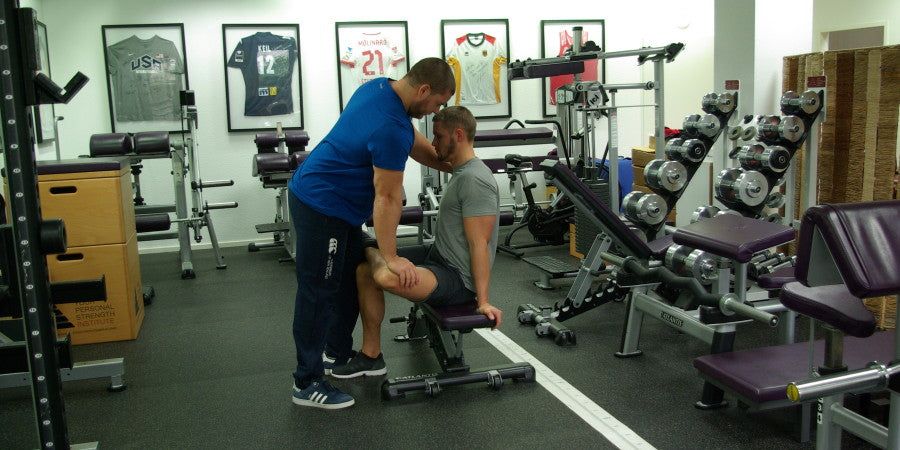The piriformis muscle, in English "pear-shaped muscle", is located in the lower layer of the hip muscles. It runs between the inside of the pelvis and the thigh bone. The piriformis is commonly referred to as the hip ex-rotator, but it is both an external and internal rotator of the thigh bone (femur). What makes it so special is above all that it rotates the femur outwards when the hips are stretched and rotates the femur inwards when the hips are bent.
Also, the piriformis is one of the most underrated muscles when it comes to getting into the deep squat position. A tight piriformis can limit range of motion, but a tight piriformis can also be caused by not bending deeply enough. This phenomenon is often seen in powerlifters. Another reason for a tight piriformis is a lot of sedentary work. This can lead to back pain and the so-called piriformis syndrome.
From a sporting point of view, the piriformis is particularly important for agility. For example, if you, as a soccer player, make a quick change of direction, ie want to pass your opponent to the right or left, you will tend to avoid the side on which your piriformis is tighter, because this requires an external rotation of the rear thigh. This makes your actions more predictable. Also, the tighter the piriformis, the slower the movement will be. A tight muscle is always a weak muscle. This also makes you slower and more prone to injury.
To avoid all of this, the seated piriformis stretch is the most efficient option. You need the help of a second person for this - see picture.
Good luck in optimizing the piriformis!
Image: Wolfgang Unsöld uses the seated Piriformis Stretch with YPSI Coach Wolfgang Hattingen to optimize the depth of the squats.

